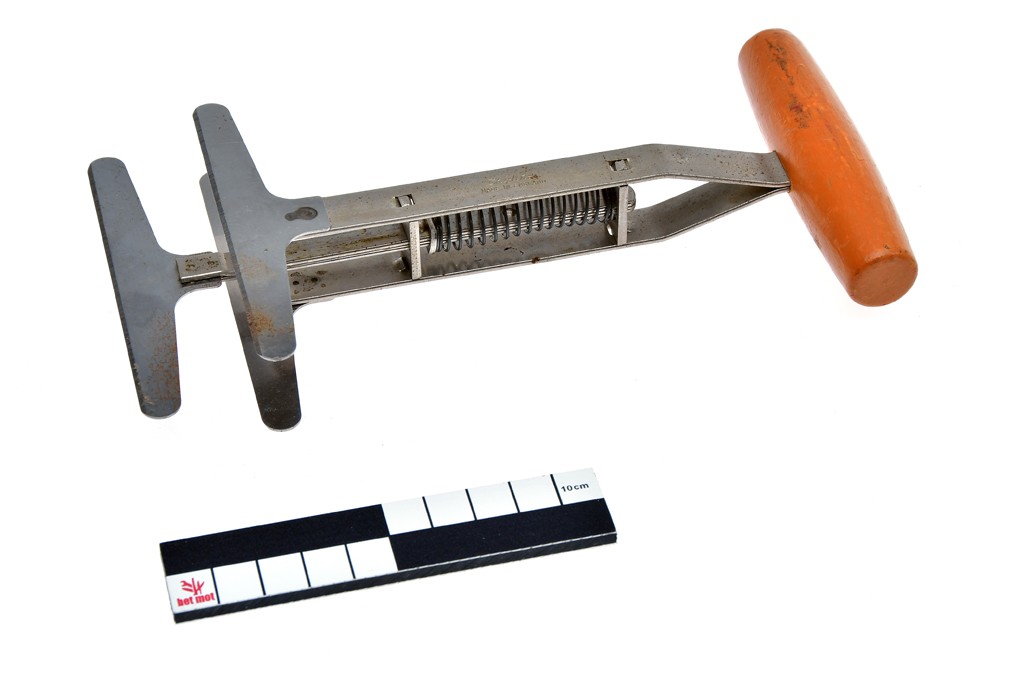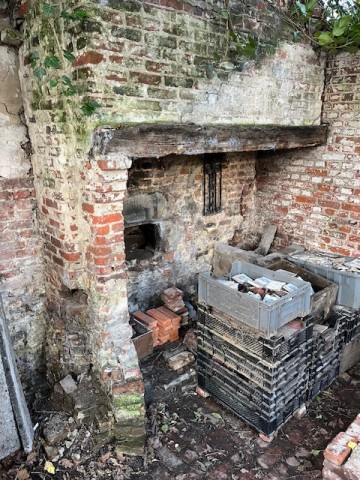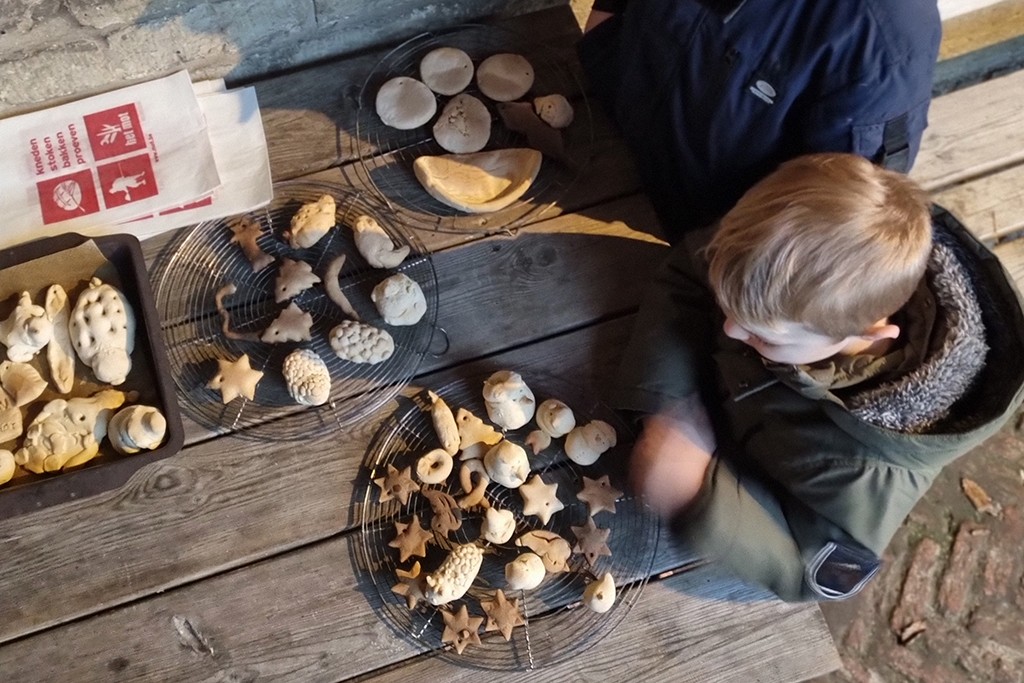Research
Search our website
Search our website by entering a keyword or choose a database above to search specifically.
Search
Showing search results 14,461 - 14,470
14,512 results found

Vegetable chopper
With a vegetable chopper you can chop vegetables into fine pieces. It may
consist of a plastic cylindrical frame, in which there is a zigzag curved
cutting blade, and a rod with a spring around it and a flat plastic handle.
The plastic cylinder is placed over the vegetable, which has already been
cut into pieces, and the spring rod is pushed down forcefully several
times. The cutting blade moves up and down and rotates so that the
vegetables are chopped into fine pieces. This model is mainly used for
cutting onions. See also the onion handle.Another model consists of three
elongated (approx. 10 cm) blades at some distance from each other, which
are attached at right angles to a metal intermediate piece that extends
perpendicularly into a wooden handle. The blade in the middle is lower than
the other two and a spring is wrapped around the spacer. When you push the
handle down, the spring is tensioned and the two outer blades move down. By
moving up and down again and again, the vegetables...

Thatcher's hook
This text can only be consulted in Dutch
<https://www.mot.be/resource/Tool/halmenhaak?lang=nl>

Carpet stretcher
This text can only be consulted in Dutch
<https://www.mot.be/resource/Tool/carpet-stretcher?lang=nl>

Dijkstraat 182, Zele, Belgium

Christmas
What to do just before Christmas?

Corking machine
This text can only be consulted in Dutch
<https://www.mot.be/resource/Tool/corking-machine?lang=nl>

Flagging iron
This text can only be consulted in Dutch
<https://www.mot.be/resource/Tool/flagging-iron?lang=nl>

Machete
"Machete" is a general term for a hand tool that is used daily in Latin and
South America, Central Africa and Southeast Asia, including as a billhook.
The tool is indispensable on the cocoa, coffee and sugarcane plantations,
on the corn fields, in the hemp or sisal cultivation (1), but it is also an
all-round tool par excellence. After all, with the machete you can also mow
grass (2), chop cassava stems and peel cassava tubers, harvest bamboo, fell
thin trees, cut your way in the jungle or in thorny vegetation, cut down
coconuts, skin killed animals, cut meat and fish, dig tubers out of the
ground, peel trees as with the strip drawing knife (3), etc.; it is also
used as a weapon (4). The machete has a long (25 to 75 cm) metal blade (5).
The back is straight or slightly concave, the cut is straight or rounded
towards the tip (6). The blade can be 3 to 10 cm wide and cuts on one,
exceptionally on both sides. The handle is made of wood, leather, rubber or
plastic. Sometimes there is a hole...

Marking hammer (lumberman)
Lumberman's hammer bearing the stamp of the owner of the forest or of the
timber merchant, serving to mark felled trees on the cross-section. The
hammer may have a stamp on one or both sides, or there may be a metal wheel
on the handle bearing several letters or numbers so that a combination can
be stamped. The stamp hammer can be distinguished from the marking adze, as
it has no axe. See also the marking hammer of a tanner and the striking
punch. [MOT]

???
Hand tool to stir the porridge in the pot or kettle over the fire. It
consists of an iron sickle-shaped working part (approx. 10 cm) that is
either an extension of or perpendicular to the stem (approx. 45 cm). The
latter may or may not be provided with a wooden handle. Another model is in
the form of a wooden kitchen scraper, the working part of which is pierced
(1). [MOT] (1) Eg. WEYNS 1974: 446.








